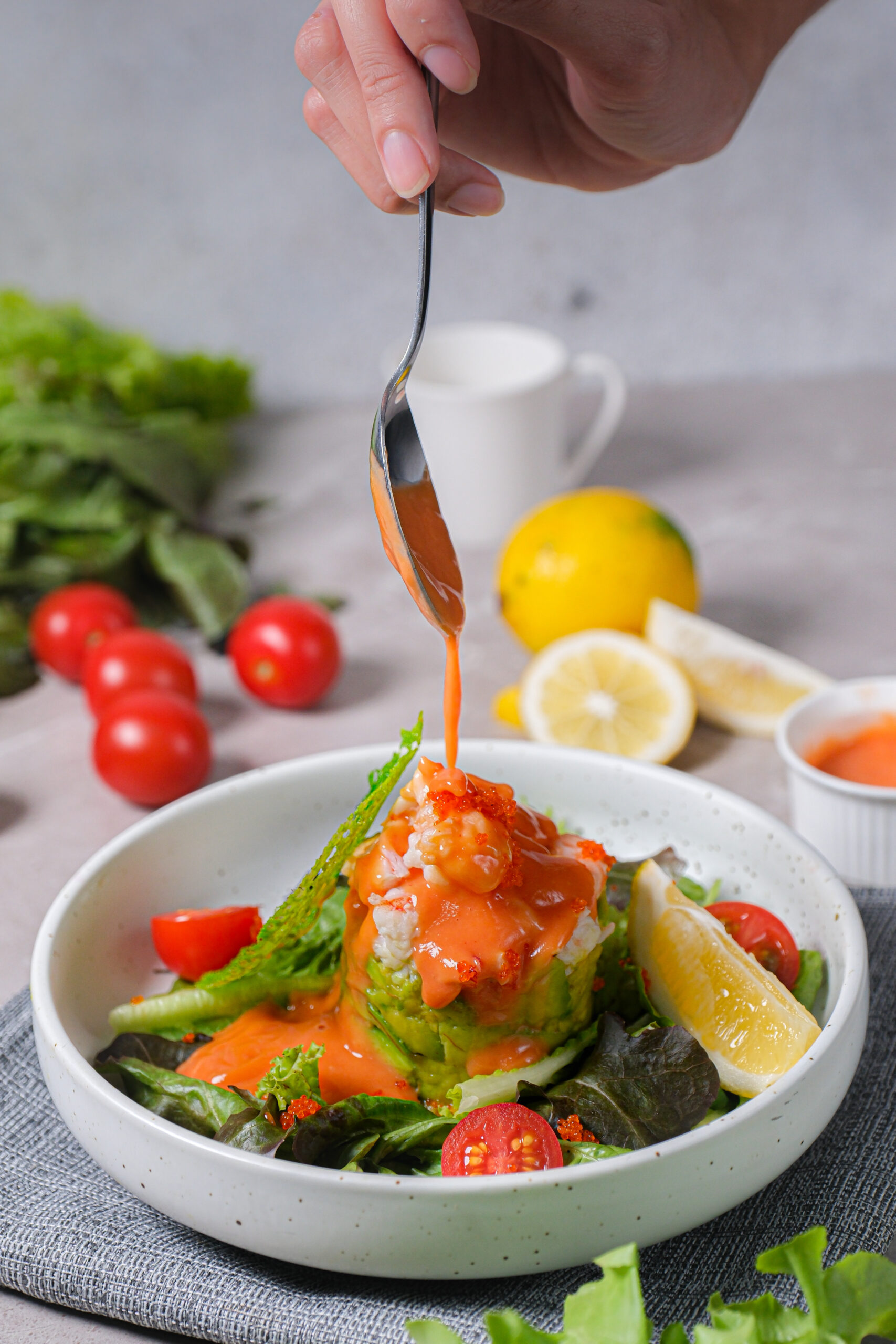If you’re looking to make some positive changes in your diet and lifestyle, then these 10 healthy cooking tips are just what you need. Whether you’re a novice in the kitchen or a seasoned chef, these tips are practical and easy to incorporate into your daily routine. From choosing the right cooking oils to adding more herbs and spices to your dishes, you’ll find simple yet effective ways to make your meals nutritious and delicious. So, grab your apron and get ready to whip up some healthy and mouthwatering creations that will leave you feeling satisfied and nourished.
Table of Contents
Choosing Healthy Ingredients
Opt for lean protein sources
When it comes to choosing healthy ingredients for your meals, opting for lean protein sources can make a significant difference. Lean proteins such as skinless chicken breast, turkey, fish, and tofu are excellent choices as they are low in saturated fats and high in essential nutrients. These proteins help in building and repairing tissues, promoting muscle growth, and keeping you feeling full for longer. So, next time you’re planning your meal, consider incorporating these lean protein options for a healthy and balanced diet.
Incorporate plenty of fruits and vegetables
Fruits and vegetables are the cornerstone of a healthy diet. They are packed with vitamins, minerals, antioxidants, and fiber, essential for maintaining overall health and well-being. Aim to incorporate a variety of colorful fruits and vegetables in your meals to ensure you are getting a wide range of nutrients. Whether it’s a colorful salad, a refreshing fruit smoothie, or a roasted vegetable medley, there are endless possibilities to enjoy these natural delights and boost your health.
Use whole grains instead of refined grains
When it comes to carbohydrates, choosing whole grains over refined grains can significantly improve your diet’s nutritional value. Whole grains such as brown rice, quinoa, whole wheat bread, and oats are rich in fiber, vitamins, and minerals. They provide sustained energy, aid in digestion, and keep you feeling fuller for longer periods. On the other hand, refined grains, like white flour and white rice, lack essential nutrients and can cause spikes in blood sugar levels. So, make the switch to whole grains and enjoy the benefits of a healthier diet.
Preparation Techniques for Healthier Cooking
Grill or bake instead of frying
One of the simplest ways to prepare healthier meals is to replace frying with grilling or baking. Frying often involves the addition of excessive oil, which increases the fat content of the food. On the other hand, grilling or baking requires little to no oil and still results in delicious and flavorful dishes. Not only does this reduce the calorie intake, but it also helps in preserving the natural flavors and nutrients of the ingredients. So, next time you’re craving fried chicken or fries, give grilling or baking a try instead.
Steam or sauté vegetables instead of boiling
When it comes to cooking vegetables, it’s essential to choose methods that retain their natural goodness. While boiling vegetables may be a common cooking technique, it can cause significant nutrient loss as vitamins and minerals leach into the water. Instead, consider steaming or sautéing your vegetables to preserve their nutritional value. Steaming helps retain the vibrant colors and crispness, while sautéing adds a delicious caramelized flavor. These methods result in vegetables that are not only visually appealing but also packed with essential nutrients.
Avoid adding excess oil or butter
While fats are an important part of a balanced diet, it’s crucial to be mindful of the quantities used in cooking. Excess oil or butter can significantly contribute to the total calorie count of a dish. Instead, try to use minimal amounts of healthy cooking oils such as olive oil or coconut oil. These oils are rich in monounsaturated fats, which are beneficial for heart health. If you prefer a buttery flavor, opt for small amounts of heart-healthy margarine or ghee. By being mindful of the fats you use, you can reduce unnecessary calories and still enjoy delicious meals.

Minimizing Sodium and Sugar Intake
Limit the use of processed and packaged foods
One of the easiest ways to reduce your sodium and sugar intake is to limit the consumption of processed and packaged foods. These products often contain high amounts of added salt and sugars, which can negatively impact your health. Instead, focus on fresh, whole foods that allow you to control the amount of sodium and sugars you consume. By cooking meals from scratch using fresh ingredients, you have the power to create healthier and tastier dishes without relying on processed options.
Use herbs and spices to enhance flavors
Adding flavor to your meals doesn’t have to come from excessive salt or sugar. Herbs and spices are a wonderful alternative that can enhance the taste of your dishes while providing additional health benefits. From basil and thyme to cumin and turmeric, there’s a wide range of herbs and spices to choose from, each with its unique flavor profile and health properties. Experiment with different combinations and discover new taste sensations while reducing your sodium and sugar intake.
Reduce sugar in recipes
Many recipes call for excessive amounts of sugar, whether it’s in drinks, desserts, or even savory dishes. However, reducing sugar in your recipes doesn’t mean sacrificing taste. There are various ways to cut back on sugar without compromising flavor. Consider using natural sweeteners like honey or maple syrup instead of refined white sugar. You can also add flavor and sweetness to your dishes with fruits, such as mashed bananas or applesauce. By reducing sugar in your recipes, you can enjoy healthier versions of your favorite treats while still satisfying your sweet tooth.
Managing Portion Sizes
Use smaller plates and bowls
Portion control plays a significant role in maintaining a healthy weight and preventing overeating. An easy trick to manage portion sizes is to use smaller plates and bowls. When we use larger plates, we tend to fill them up more, leading to larger portion sizes. By using smaller plates, you still get the visual satisfaction of a full plate, but with smaller amounts of food. This simple adjustment can help you consume fewer calories while feeling satisfied and in control of your portions.
Control portion sizes by measuring ingredients
When cooking and following recipes, it’s important to pay attention to portion sizes by measuring ingredients. This allows you to have a better understanding of the nutritional content of your meals and ensures that you’re not unknowingly consuming excessive amounts of certain ingredients. Invest in measuring cups, spoons, and kitchen scales to accurately measure ingredients, especially when it comes to fats, sugars, and calorie-dense items. By being mindful of portion sizes, you can better manage your calorie intake and maintain a healthier lifestyle.
Practice mindful eating
Practicing mindful eating is an effective way to manage portion sizes and develop a healthier relationship with food. When we eat mindfully, we pay attention to our body’s hunger and fullness cues, allowing us to eat until we feel satisfied, but not overly full. Take the time to savor each bite, chew slowly, and tune in to your body’s signals. Put away distractions like phones or TVs and focus on the experience of eating. By practicing mindful eating, you can enjoy your meals more fully, while promoting better digestion and portion control.

Reducing Fat Content
Choose low-fat or non-fat dairy products
Dairy products can be a significant source of saturated fats in our diets. However, there are alternative options available that are lower in fat. Choose low-fat or non-fat versions of milk, yogurt, and cheese to reduce your fat intake while still enjoying the benefits of dairy. These products provide calcium, protein, and vitamins without the excess fat content. Incorporating low-fat or non-fat dairy into your meals can help in maintaining healthy bones, muscle function, and overall well-being.
Trim visible fat from meats
When it comes to meat consumption, choosing lean cuts and trimming visible fat can significantly reduce the fat content of your meals. Opt for skinless chicken breast, lean cuts of beef or pork, or fish to minimize saturated fat intake. Before cooking, trim any visible fat from the meat to further reduce the fat content. This simple step can make a significant difference in the overall healthiness of your dishes, helping you stay on track with your dietary goals while still enjoying delicious meals.
Use healthy cooking oils in moderation
While fats are an essential part of a balanced diet, it’s important to be mindful of the types and quantities of fats we consume. Opt for healthier cooking oils, such as olive oil, avocado oil, or coconut oil, as they contain heart-healthy monounsaturated or polyunsaturated fats. However, it’s crucial to use these oils in moderation, as they are still calorie-dense. Be conscious of portion sizes when drizzling oil over salads or sautéing ingredients. By using fats in moderation, you can add flavor to your dishes without compromising their nutritional value.
Enhancing Nutritional Value
Add nutritious toppings and garnishes to dishes
One way to enhance the nutritional value of your meals is by adding nutritious toppings and garnishes. Consider sprinkling flaxseeds, chia seeds, or toasted nuts over salads or yogurt to add a boost of healthy fats and fiber. Fresh herbs like parsley or cilantro not only add flavor but also provide valuable vitamins and antioxidants. You can also top your meals with sliced avocado, which is rich in heart-healthy monounsaturated fats. These simple additions can elevate the nutritional profile of your dishes and make them more enjoyable.
Incorporate superfoods into your meals
Superfoods are nutrient-dense foods that provide a variety of health benefits. Including these foods in your meals can amplify their nutritional value. Popular superfoods include blueberries, spinach, kale, quinoa, and salmon. Add blueberries to your morning oatmeal, incorporate spinach or kale into smoothies and salads, substitute quinoa for rice, and enjoy grilled salmon for its omega-3 fatty acids. By incorporating superfoods into your meals, you can maximize the nutritional content and reap the health benefits they offer.
Include a variety of colors on your plate
Eating a variety of colors is not just visually appealing, but it also indicates a diverse range of nutrients. Aim to include a colorful selection of fruits and vegetables in your meals. Different colors represent different vitamins, minerals, and antioxidants. For example, orange fruits and vegetables are rich in beta-carotene, while dark leafy greens contain folate and calcium. By incorporating a rainbow of colors on your plate, you can ensure that you’re getting a wide range of essential nutrients, boosting your overall health and well-being.

Cooking Methods for Retaining Nutrients
Briefly cook vegetables to retain their nutrients
Vegetables are packed with essential vitamins and minerals that can be sensitive to heat and water. To retain their nutrients, it’s best to cook vegetables briefly. This can be achieved through methods such as blanching, steaming, or sautéing. These methods allow vegetables to maintain their vibrant colors, crispness, and nutritional value. Lightly blanched green beans, steamed broccoli, or sautéed zucchini can be delicious and highly nutritious additions to your meals. By cooking vegetables briefly, you preserve the vitamins and minerals that contribute to your overall health.
Avoid overcooking to preserve vitamins and minerals
Overcooking vegetables can lead to significant nutrient loss as vitamins and minerals degrade with prolonged exposure to heat and water. To preserve the nutritional value of your vegetables, it’s important to avoid overcooking them. Instead, opt for cooking methods that take minimal time, such as stir-frying or roasting. These methods allow vegetables to retain their crunchy texture and vibrant colors while keeping their nutritional content intact. By being mindful of cooking times, you can ensure that your vegetables remain a valuable source of essential nutrients.
Opt for steaming or stir-frying instead of boiling
When it comes to cooking methods, steaming and stir-frying are excellent choices for retaining nutrients. Boiling can cause vitamins and minerals to leach into the cooking water, resulting in substantial nutrient loss. Steaming vegetables in a steamer basket or using a microwave steamer requires minimal water contact, preserving the nutrients within the vegetables. Stir-frying involves high heat and quick cooking, allowing vegetables to retain their texture and nutritional content. By opting for steaming or stir-frying, you can enjoy vegetables that are both nutritious and delicious.
Experimenting with Healthy Recipes
Try new recipes with alternative ingredients
Exploring new recipes is an exciting way to incorporate healthier ingredients into your cooking. Look for recipes that use alternative ingredients or provide healthier versions of your favorite dishes. For example, try cauliflower rice instead of white rice, zucchini noodles instead of traditional pasta, or chickpea flour for gluten-free baking. By trying new recipes, you can expand your culinary repertoire and discover healthier options that still satisfy your taste buds.
Substitute unhealthy ingredients with healthier options
Transforming your favorite recipes into healthier versions can be as simple as substituting unhealthy ingredients with healthier alternatives. Replace butter or oil in baking recipes with unsweetened applesauce or mashed bananas to reduce fat content. Trade refined white flour for whole wheat flour, almond flour, or oat flour to increase fiber and nutrient content. Use Greek yogurt instead of sour cream for a protein-packed swap. Don’t be afraid to get creative and experiment with different substitutions to make your recipes healthier without sacrificing taste.
Explore international cuisines for healthy inspirations
There’s a world of healthy and flavorful cuisines waiting to be explored. Look beyond your usual repertoire and venture into international cuisines for healthy inspirations. Mediterranean cuisine, for example, emphasizes whole grains, lean proteins, and abundant fruits and vegetables. Asian cuisine often incorporates a variety of fresh herbs, spices, and nutrient-rich ingredients. By exploring different culinary traditions, you’ll discover new flavors, cooking techniques, and healthy ingredients that can add excitement and diversity to your meals.
Meal Planning and Prepping
Plan your meals in advance to ensure balanced nutrition
Meal planning is an effective strategy to ensure balanced nutrition throughout the week. By setting aside some time to plan your meals, you can create a well-rounded menu that incorporates all the essential food groups. Consider including lean proteins, whole grains, fruits, vegetables, and healthy fats in your meal plan. This allows you to make healthier choices and avoid relying on convenience foods or fast-food options. By planning ahead, you’ll be more likely to stick to your healthy eating goals and nourish your body with nutritious meals.
Prep ingredients ahead of time for quick and healthy cooking
Prepping ingredients ahead of time can save you precious time during busy weekdays and make healthy cooking more accessible. Spend some time each week washing, chopping, and storing vegetables for easy access. Pre-cook or marinate proteins to make meal assembly a breeze. Pre-measure ingredients for recipes to ensure accurate portion sizes. By prepping ingredients in advance, you’ll be one step closer to healthier meals and reduce the temptation to reach for unhealthy options when time is limited.
Batch cook and freeze meals for busy days
Batch cooking and freezing meals is a game-changer for busy individuals who still want to prioritize their health. Set aside a day or two each month to prepare larger quantities of your favorite recipes. Portion the meals into individual containers and freeze them for later use. This way, when you have a hectic day or no time to cook, you still have a healthy meal ready to go. Batch cooking not only saves time but also ensures that you have nutritious options readily available, even on the busiest of days.
Eating Out Healthily
Choose grilled or baked dishes instead of fried options
Eating out doesn’t have to mean sacrificing your healthy eating goals. When dining at restaurants, opt for grilled or baked dishes instead of fried options. Grilled chicken, fish, or lean cuts of meat are great choices that are lower in unhealthy fats. Baked potatoes or steamed vegetables make healthier side options compared to fries or heavy cream-based sides. By making simple choices, you can enjoy a delicious meal while still sticking to your healthy lifestyle.
Opt for smaller portions or share meals
Restaurant portion sizes can often exceed our daily caloric needs. To avoid overeating, consider opting for smaller portions or sharing meals with dining companions. Many restaurants offer smaller portion options or even half-size portions. Alternatively, you can split a dish with a friend or family member. This way, you can still indulge in your favorite foods without consuming excessive amounts of calories. By being mindful of portion sizes when dining out, you can maintain a healthier balance in your diet.
Ask for dressings and sauces on the side
Dressings and sauces can contribute a significant number of calories and unhealthy fats to your meal. To maintain control over your nutritional intake, ask for dressings and sauces to be served on the side. This allows you to use them sparingly or even omit them altogether if they’re not necessary. Many restaurants offer healthier dressing options, such as vinaigrettes or light dressings, which can be a better choice compared to heavy cream-based options. By being mindful of dressings and sauces, you can make healthier choices and still enjoy the flavors of your meal.
With these healthy cooking tips, you’re well on your way to a healthier lifestyle. By opting for lean proteins, incorporating plenty of fruits and vegetables, using whole grains, and choosing healthier cooking methods, you can create delicious and nourishing meals. By minding portion sizes, reducing fat content, enhancing nutritional value, and using cooking methods that retain nutrients, you can further optimize your meals’ health benefits. So, start experimenting with healthy recipes, plan and prep your meals, and make mindful choices when eating out. Here’s to a healthier, happier you!




